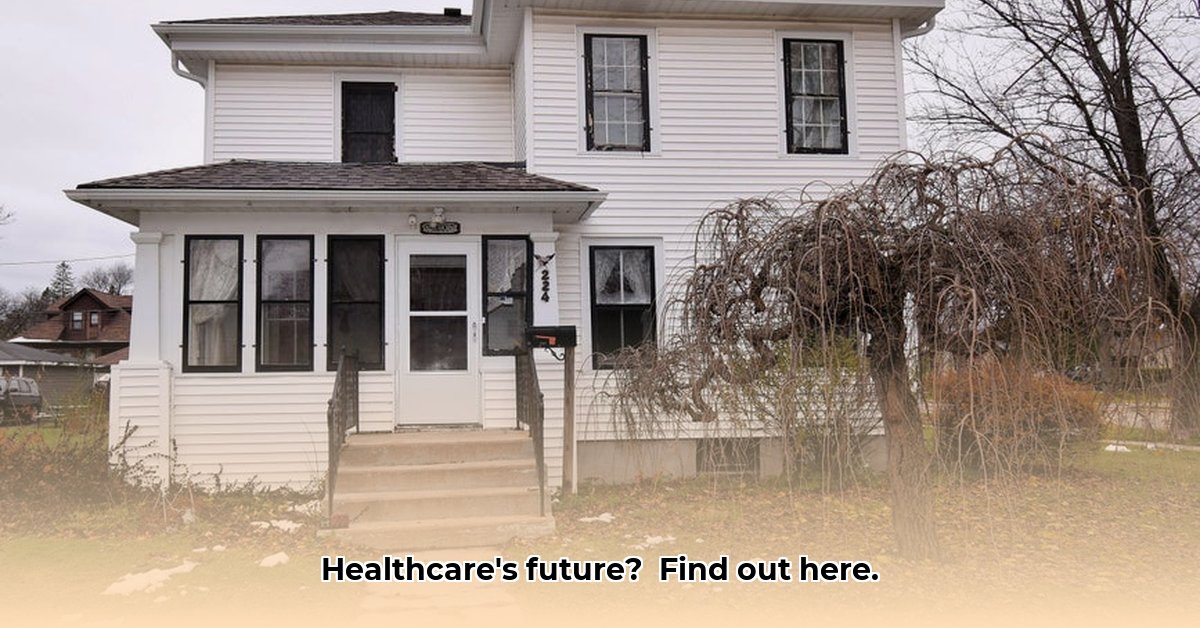
219 N Broad Street: A Center for Healthcare Innovation
219 N Broad Street, home to Drexel Medicine's Internal Medicine Department, represents a significant hub for healthcare innovation. This facility is dedicated to providing superior patient care through the implementation of advanced technologies and a patient-centered approach. It's a modern facility focused on efficiency and improved patient outcomes. The integration of telehealth, for instance, significantly expands access to care, regardless of geographical location or mobility limitations. This accessibility has already proven crucial in improving patient care. For examples of similar innovative approaches in other healthcare settings, see this related case study. How has the facility addressed the challenges of integrating new technologies, optimized patient flow, and improved resource management for better care? Let's explore.
Enhancing Patient Care Through Technology and Resource Management
The success of 219 N Broad Street extends beyond technological advancements. The facility's skilled physicians, nurses, and support staff are integral to its success. Their dedication to both the scientific and compassionate aspects of medicine ensures patients receive tailored, high-quality care. But how is this dedication translated into tangible improvements?
Smart resource management is a cornerstone of 219 N Broad Street's operational efficiency. By analyzing patient flow data and demand, staffing levels are optimized, minimizing patient wait times. The utilization of state-of-the-art Electronic Health Records (EHRs) systems further enhances efficiency, improves data security, and facilitates better-informed medical decisions. This data-driven approach to resource allocation significantly impacts the patient experience and treatment outcomes, leading to improved healthcare delivery. What additional strategies are employed to ensure efficient resource allocation?
219 N Broad Street: A Vision for the Future of Healthcare
Drexel Medicine has ambitious plans for the future of 219 N Broad Street. Ongoing investments in technology and comprehensive staff training programs are central to this vision. These initiatives ensure the team remains equipped to meet the evolving needs of its patients. They're committed not only to technological upgrades but also to strengthening community relationships.
A key element of this forward-thinking strategy is the implementation of predictive modeling for preventative care. This proactive approach allows for early identification and intervention in potential health problems, significantly improving patient outcomes. Predictive modeling, combined with strengthened community engagement, will ensure that healthcare at 219 N Broad Street remains at the forefront of innovative, preventative medicine. Does this proactive approach differ from the traditional reactive model of only dealing with issues as they arise?
Collaboration: The Key to Success at 219 N Broad Street
The success of 219 N Broad Street is a testament to collaborative efforts among multiple stakeholders. This includes patients, physicians, administration, and regulatory bodies. Their collective short-term and long-term goals are aligned to achieve exceptional patient care.
Collaborative Efforts:
- Patients: Experience improved access, reduced wait times, and enhanced communication. Their long-term goal is personalized, proactive care leading to improved well-being.
- Physicians: Streamlined workflows, access to advanced technology, and reduced administrative burdens allow for increased autonomy in patient care and professional development opportunities.
- Administration: Efficient resource allocation and data-driven decision-making contribute to long-term financial stability and service expansion.
- Regulatory Bodies: Maintaining regulatory compliance and actively shaping future healthcare policies are key.
This collaborative approach ensures seamless integration of all aspects of care, culminating in an exceptional patient experience. The facility's mission is simple yet powerful: to enhance lives through advanced medicine, delivered with a profound commitment to patient well-being and continuous innovation.
Key Takeaways: Innovation and Collaboration at Drexel Medicine
- Technological Advancement: 219 N Broad Street utilizes cutting-edge technology, including EHR systems and telehealth, to increase efficiency and improve patient access to care.
- Data-Driven Approach: Data analysis informs staffing levels, resource allocation, and proactive preventative care strategies.
- Collaborative Culture: Successful patient care hinges on collaboration between patients, physicians, administration, and regulatory bodies.
This facility exemplifies a model of healthcare delivery that prioritizes innovation, efficiency, and a patient-centered approach, setting a high standard for future healthcare advancements.